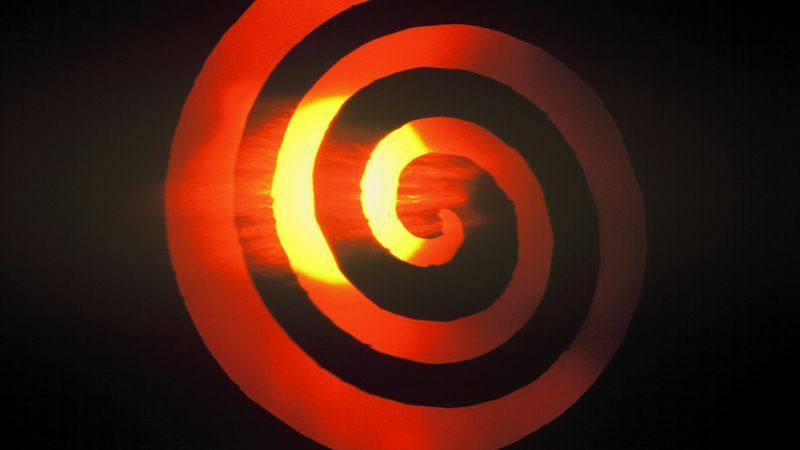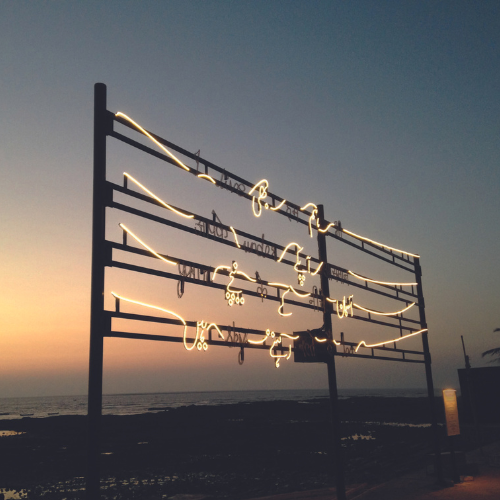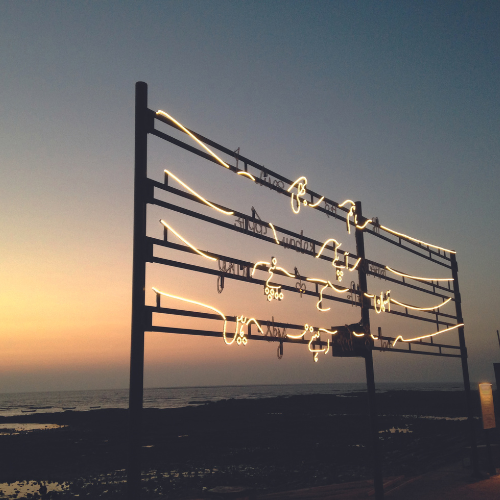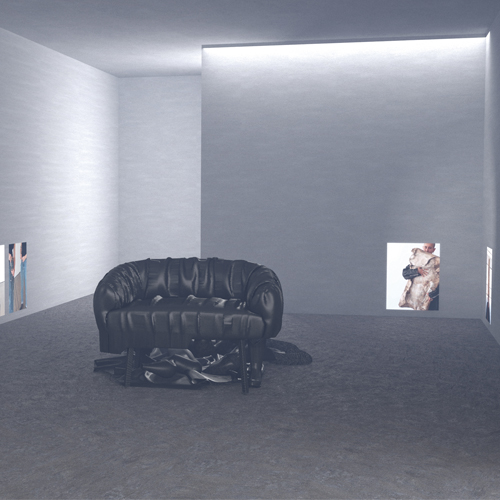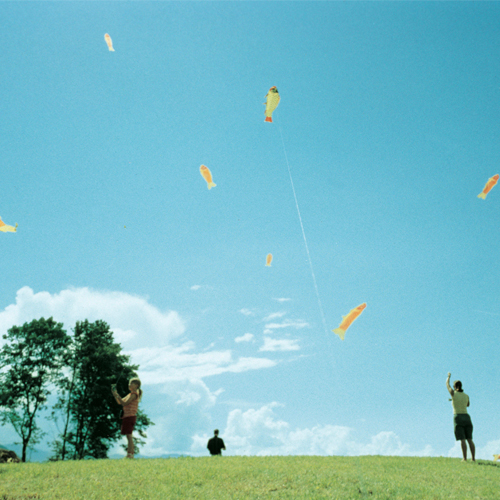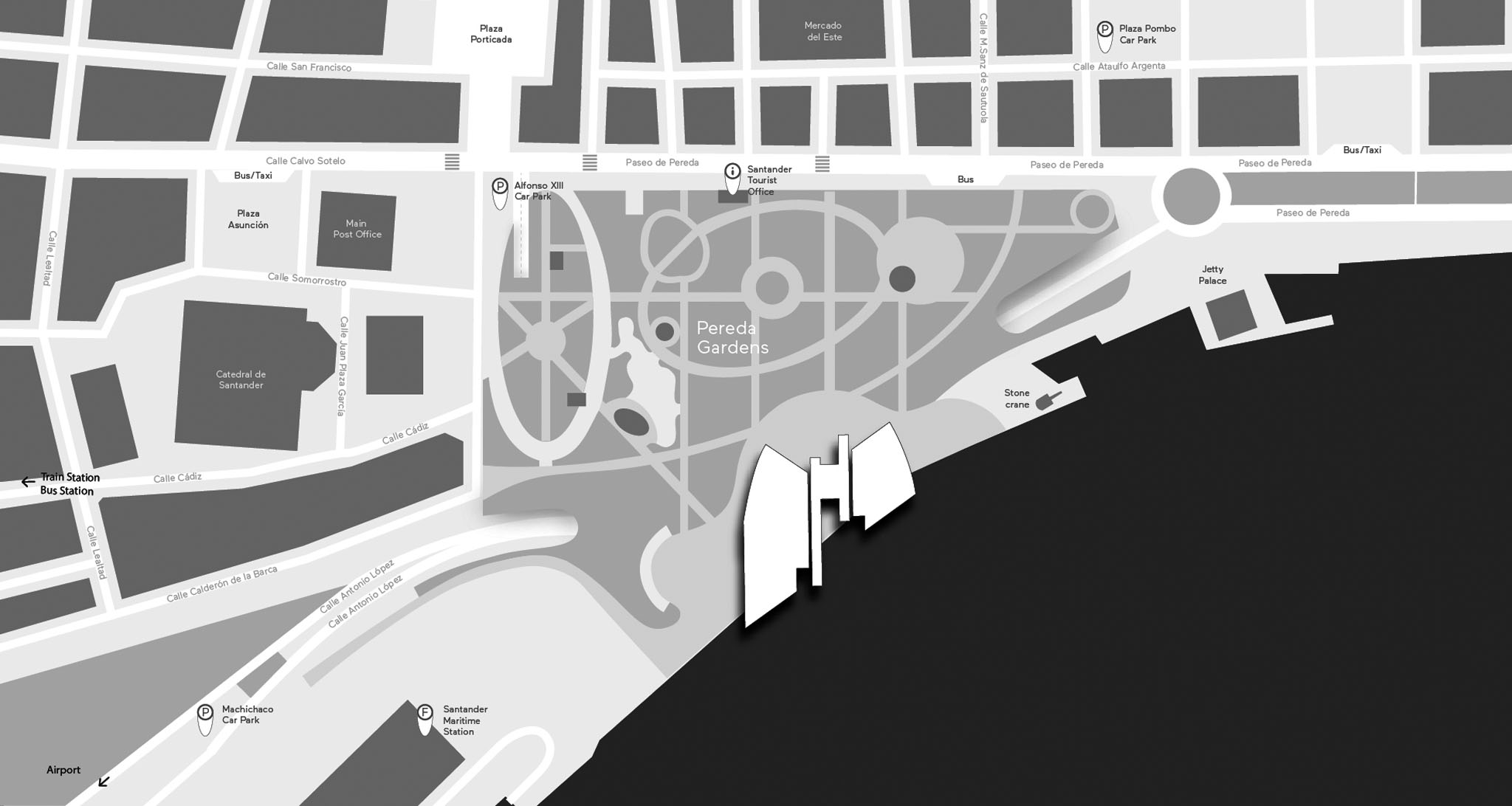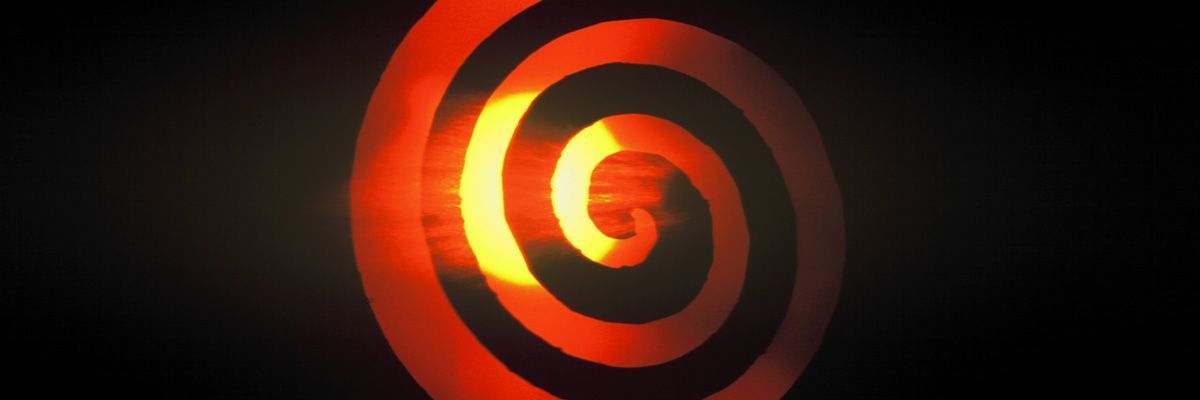
CENTRO BOTÍN PRESENTS “THE RECONFIGURED LANDSCAPE”, A JOURNEY THROUGH THE VISUAL ARTS IN THE LAST DECADE
- Leonor Antunes, Lothar Baumgarten, Joan Jonas and Irene Kopelman, among other artists, afford a fascinating overview of the various approaches taken by art practitioners to capture their surrounding landscape.
- The Reconfigured Landscape, featuring a selection of works from the Fundación Botín collection, runs from 23 June to 6 October 2018.
This coming 23 June, Centro Botín is opening the exhibition The Reconfigured Landscape, a selection of works from the Fundación Botín collection by renowned Spanish and international artists who started working in the late twentieth century. Names such as Leonor Antunes, Lothar Baumgarten, Tacita Dean, Joan Jonas, Irene Kopelman, Julie Mehretu and Oriol Vilanova showcase different ways of representing our surrounding world and offer visitors to the exhibition a historical overview of Fundación Botín’s ongoing engagement with the visual arts over the last ten years. The majority of the artworks are being shown for the first time.
The exhibition, which will remain on view until 6 October on the first floor of Centro Botín, includes works by artists who have directed some of Fundación Botín’s Visual Arts workshops in Santander alongside others by recipients of the foundation’s scholarships, mostly younger artists who have gone on to become key figures in their generation, such as João Onofre, Sara Ramo or Ignacio Uriarte.
“This mix of generations is an important dynamic of the collection. It provides an interesting perspective on artistic practice in the twenty-first century, and mirrors the formal freedom artists have consolidated over the past fifty years”, explains Benjamin Weil, artistic director of Centro Botín and curator of the exhibition.
In addition to painting, drawing and sculpture, The Reconfigured Landscape includes videos and multimedia installations, a form that perhaps epitomizes the forefront of artistic research in the past few decades.
“We could look on this exhibition as a walkthrough of the artistic landscape of recent years in which artists have searched for different ways of representing their surrounding world“, says Weil.
On this journey through the visual arts of the last decade, Leonor Antunes (Lisbon, 1973) defends the material autonomy of sculptures and incorporates the exhibition space into her Random intersection #14 as an integral part of the experience of the sculpture. She contextualises the sculptural element by intervening in the exhibition space and “making it an essential component of the composition”, as the curator tells us.
Meanwhile, Lothar Baumgarten (Rheinsberg, 1944), one of the forerunners of conceptual art, leverages the language of photography and installations to represent the world and underline the relationship between culture and nature. After studying the lives of indigenous communities and their ways of social and cultural organisation, Baumgarten created Montaigne/Pemón, an idealised vision of this collective while also presenting a critical discourse on the way in which we look at and deal with more ‘primitive’ communities.
Promising home-grown talents like Jacobo Castellano (Jaén, 1976) also play a major role in the exhibition. Akin to an art archaeologist, this young artist from Andalusia recovers materials he finds around him, mainly wood, which are imbued with historicity, and brings to the surface the objects’ individual ‘biography’ and uses them to create a narrative.
This need to rescue forgotten moments from history is also one of the signature traits of the British artist Tacita Dean (Canterbury, 1965). Dean engages primarily with 16 mm film and sound works in which the passing of time, chance and coincidence take on a core role in the exhibition of imaginary and enigmatic landscapes. “The landscape is at the very centre of her narrative“, Benjamin underscores.
Fernanda Fragateiro (Portugal, 1962) has also accumulated considerable baggage in the art world, defending the relationships between art, architecture and landscape. On this occasion, in Um caminho que não é um caminho, the Portuguese artist casts a spotlight on the materials and the exhibition space itself. Playing with apparently precise modular structures, she advocates a minimalist aesthetic in form, colour and texture.
One can see another way of redefining space in the work Don Quijote también esculpió el aire, by Nuria Fuster (Alicante, 1978). The artist salvages previously used objects, such as plastics, iron or stools, and transforms them into artistic creations. In the same way as Don Quixote transformed windmills into giants, Fuster converts objects into new sculptures full of life.
The changing nature of the sea and the oceans is explored in The Reconfigured Landscape thanks to Irene Kolpelman (Argentina, 1974). Fascinated by the idea of showing the different colours of water, the artist began working with Marcel Wernand, a doctor in Physical Oceanography at NIOZ (Royal Netherlands Institute for Sea Research). Wernand, a senior researcher at the institute, is in charge of the design and development of multi-spectral instruments for measuring the colours of the ocean; the bio-optical variability of estuaries and seas or the long-term changes in the colour of the ocean.
Kopelman and Wernand struck up an ongoing dialogue that further confirmed the strong symbiosis between science and art, and led to the creation of Indexing Water. Kopelman starts out by representing the natural patterns to be found in nature in drawings, and then he turns them into paintings, sculptures and installations back in his workshop studio.
The complex relationship between human beings and nature and the environment is the predominant issue in the work of Joan Jonas (New York, 1936), a pioneer in the practice of performance, experimental film and video-installation.
Inspired by her latest travels and by her discovery of the rural areas in Cantabria (the Nansa valley, the prehistoric caves of Altamira, El Castillo and Las Monedas, the botanical gardens of Puente San Miguel, etc.), this work, Caudal o río vuelo o ruta / stream or river flight or pattern, is made up of two video projections, a set of ink on paper drawings and multi-coloured wall drawings.
Since her beginnings, drawing has been central to Joan Jonas’s practice, understanding it both as an action itself and the traces left by the action. Sometimes, during the performance, the artist draws directly on a surface—paper, slate, wall, easel, screen or floor—while other times she projects the drawing she makes in real time on a screen using an overhead projector or video camera, and she also sometimes incorporates previously recorded material.
Joan Jonas spent a large part of her childhood in the countryside, in some ways explaining her strong connection with nature and, as a result, her concern with our relationship with our environment.
The Wall Drawing *499, 1986, by Sol Lewitt (Hartford, CT, 1928 – New York, NY, 2007) is a drawing of a flat-topped pyramid with colour ink washes superimposed, installed in the assembly hall at Fundación Botín in Santander since 1992. It is an excellent example of the extraordinary coherence of Lewitt’s systematic explorations and the evolution and sheer diversity of his practice.
A fundamental figure in Conceptual Art, Lewitt’s work speaks of his fascination with simple geometric shapes as well as with “continuous” and “complex” forms, while at once engaging with a variety of techniques including graphite, colour pencil, Indian ink or acrylic paint.
Julie Mehretu (Addis Abeba, 1970), who has had a recent solo show at Centro Botín, is represented in the collection with the works Epigraph, Damascus, 2016, and Conjured Parts (Sekhmet), 2016. Mehretu combines geometrical lines, architectural drawings and urban projections with layers of colour and other more personal elements, painstakingly working each surface.
In a complex interplay between precision and chaos, the shapes interact on the canvas often in the form of a whirlpool, currents or pieces that shatter in the air as the result of an explosion or implosion, and reach out to the spectator.
Ensnaring and surprising the viewer is also the goal of João Onofre (Lisbon, 1976). By means of framing and montage borrowed from the language of cinematography, in Ghost, 2009/2012, Onofre conjures up an island that floats down the estuary of the river Tagus. The film records the silent journey of the floating island, inhabited by a tropical palm tree which is relatively hard to find in the northern hemisphere, which stands eleven metres over the surface of the island. The island travels through the city of Lisbon from east to west until it is lost in the horizon in a completely implausible yet nonetheless real vision.
Another event that also seems highly improbable happened in Los ayudantes, in which the Spanish-Brazilian artist Sara Ramo (Madrid, 1975) reflects a strange ritual with masked characters in the guise of a macaco monkey man or a pink elephant man.
To develop her project, Ramo travelled to the Amazonian jungle and there, in Inhotim, the world’s largest outdoor art museum, she filmed Los ayudantes, in which she recorded a night-time ritual in which strange masked characters play musical instruments.
Inspired by the text of the same title written by Giorgio Agamben, the video, which is part of a trilogy on rituals and circular time, analyses the role of music, rituals and play in our relationship with nature.
Without any pretensions or ulterior motives, Ignacio Uriarte (Krefeld, 1972) claims that he makes “office art” in which he primarily uses objects we can normally find in the workplace, such as felt-tip markers, ballpoint pens, printers, and so on.
In this work, acquired by Centro Botín, Uriarte presents a series of slides that count in Roman numerals from 1 up to 40 and back again. The numbers are written with ballpoint pens, though not in the conventional sense, but used as sculptural elements that create spatial compositions. In this way, the tool for writing is transformed into a sign. In addition, the constant rhythm of the timer turns the projection into a kind of archaic clock.
Finally, the exhibition The Reconfigured Landscape also includes the work of Oriol Vilanova (Manresa, 1980). Si la noche fuese un color is made up of 700 postcards related with magic and night-time landscapes. The artist, who finds his raw material in flea markets all over the world, compiles postcards of beds, of cats, of pigeons, of bars or restaurants. “Oriol Vilanova creates his own landscape, as if each postcard were a pixel, building a portrait of the tourist landscape“, concluded Benjamin Weil.
